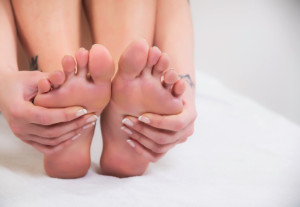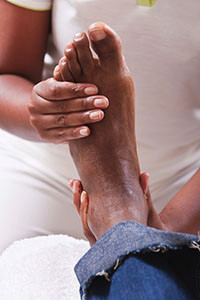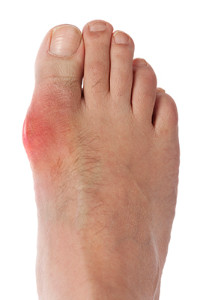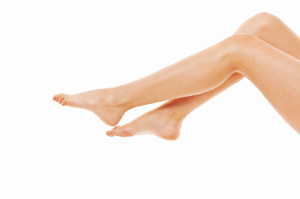Corns and calluses are thickened areas of the skin that appear in areas of high friction and pressure, such as the feet. Corns differ from calluses in that they tend to be smaller with a central core of keratin. Soft corns may form between the toes where skin is usually moist from sweat or inadequate drying. This type of corn appears to be soft and rubbery and is also the result of excessive friction. Some causes of corns include uneven weight distribution, bunions, claw toes, poorly fitting shoes, and arthritis in the feet.
are thickened areas of the skin that appear in areas of high friction and pressure, such as the feet. Corns differ from calluses in that they tend to be smaller with a central core of keratin. Soft corns may form between the toes where skin is usually moist from sweat or inadequate drying. This type of corn appears to be soft and rubbery and is also the result of excessive friction. Some causes of corns include uneven weight distribution, bunions, claw toes, poorly fitting shoes, and arthritis in the feet.
If you have any concerns regarding your feet and ankles, contact one of our podiatrists of Westside Podiatry Center, LLP. Our doctors will treat your foot and ankle needs.
Corns: What Are They? and How Do You Get Rid of Them?
Corns can be described as areas of the skin that have thickened to the point of becoming painful or irritating. They are often layers and layers of the skin that have become dry and rough, and are normally smaller than calluses.
Ways to Prevent Corns
There are many ways to get rid of painful corns such as wearing:
- Well-fitting socks
- Comfortable shoes that are not tight around your foot
- Shoes that offer support
Treating Corns
Treatment of corns involves removing the dead skin that has built up in the specific area of the foot. Consult with Our doctors to determine the best treatment option for your case of corns.
If you have any questions please feel free to contact one of our offices located in Liverpool, Camillus, Skaneateles, Oswego, and Cicero, NY . We offer the newest diagnostic and treatment technologies for all your foot and ankle needs.



 Ingrown toenails
Ingrown toenails